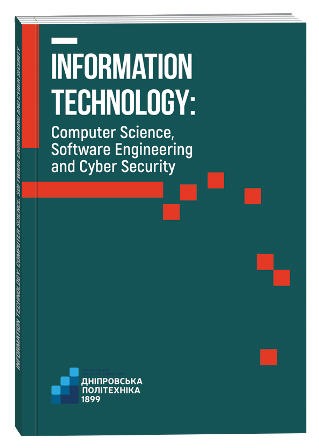CRO METHODS BASED ON MACHINE LEARNING
DOI:
https://doi.org/10.32782/IT/2024-1-5Keywords:
conversion rate optimization, machine learning, content optimization.Abstract
This article analyzes conversion rate optimization (CRO) methodologies based on machine learning. Existing CRO systems, including their functionality and efficiency, are examined in detail. The article provides an overview of various methods already used in CRO systems, such as A/B testing, web analytics, and content personalization. Special attention is paid to the implementation of machine learning methods in the CRO field. The advantages of using ML are highlighted, such as the ability to analyze large volumes of data, speed of decision-making, and process automation. A specific plan for implementing ML in the CRO system is presented, including the use of algorithms for predicting changes in conversions, identifying user patterns, and optimizing content. The article highlights the importance of development and modernity in the CRO field, as well as points out the potential advantages of using machine learning to enhance the efficiency of conversion optimization. The purpose of the work is to improve existing CRO methods by using machine learning methods for more accurate prediction of user behavior and more effective content personalization. The research methodology is based on the analysis of big data, the use of neural networks, and cluster analysis. In particular, a cluster analysis method is applied for grouping text descriptions of goods and a recommendation system based on a collaborative filtering algorithm implemented by a deep neural network. The scientific novelty lies in the use of machine learning for an adaptive recommendation and search system based on neural networks and cluster analysis. The conclusion is the significant potential of using machine learning in the field of CRO, demonstrating that the implementation of deep neural networks and cluster analysis algorithms can be effective in predicting conversions and personalizing content.
References
A/B Testing: A Systematic Literature Review / Federico Quin та ін. 2023. URL: https://arxiv.org/pdf/2308.04929.pdf (дата звернення 19.02.2024).
Digital Marketing Strategy to Increase Sales Conversion on E-commerce Platforms. Yudiyanto Joko Purnomo. 2023. URL: https://doi.org/10.61100/adman.v1i2.23 (дата звернення 20.02.2024).
Predictive Analytics and Machine Learning in Direct Marketing for Anticipating Bank Term Deposit Subscriptions / A. M. Zak та ін. 2024. URL: http://surl.li/rxrue (дата звернення: 26.02.2024).
P. D. K. Analysis of Neural Network Based Language Modeling. March 2020. 2020. Т. 2, № 1. С. 53–63. URL: http://surl.li/ryndd (дата звернення: 25.03.2024).
Rajihy, Y., Nermend, K. and Alsakaa, A. (2017). Back-propagation artificial neural networks in stock market forecasting. An application to the Warsaw Stock Exchange WIG20, AESTIMATIO, The IEB International Journal of Finance, 15, pp. 88-99. doi: 10.5605/IEB.15.5. URL: http://surl.li/rxruo (дата звернення: 26.02.2024).
A/B-тестування: що це таке та як проводити спліт-тест. Блог хостера HOSTiQ.ua. URL: http://surl.li/rxrwh (дата звернення: 04.03.2024).
Preston J. digital marketing institute. URL: http://surl.li/rxrvb (дата звернення: 20.03.2024).
Носенко Ю. Knewton analytical review as a platform for personalization of learning content. Information Technologies in Education. 2020. № 44. С. 65–76. URL: https://doi.org/10.14308/ite000727 (дата звернення: 25.03.2024).
Recommender Systems Based on Collaborative Filtering Using Review Texts–A Survey / M. Srifi та ін. 2020. URL: https://doi.org/10.3390/info11060317 (дата звернення: 20.02.2024).
Amazon – Ratings (Beauty Products). Kaggle: Your Machine Learning and Data Science Community. URL: http://surl.li/rxrvk (дата звернення: 19.02.2024).
Орєхова І. В. _Дослідження методів вирішення проблеми холодного старту в проектах побудови рекомендаційних систем. URL: http://surl.li/rxrwp (дата звернення: 13.03.2024).
Home Depot Product Datasets. URL: http://surl.li/rxrwy (дата звернення: 21.02.2024).







